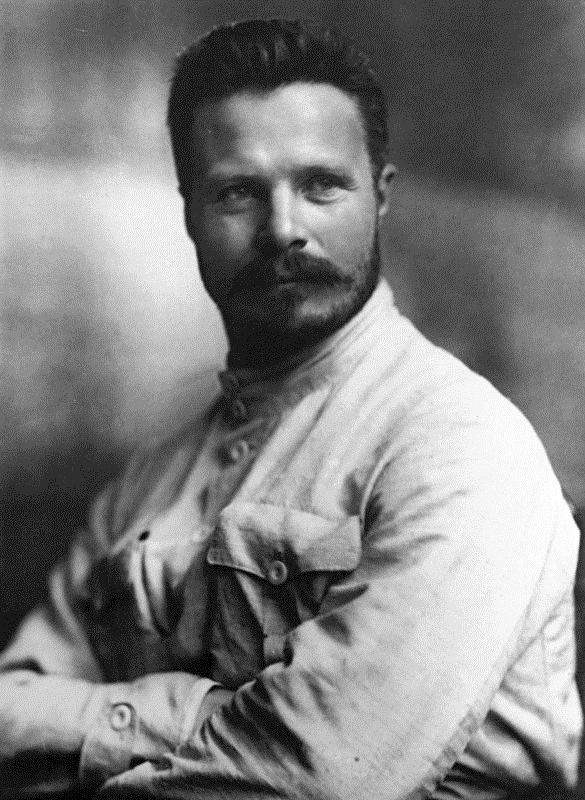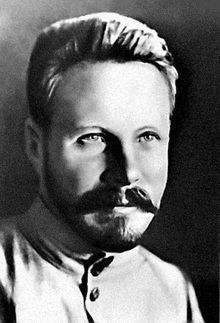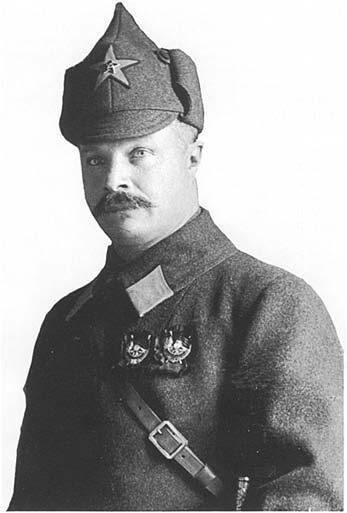Premier Alexey Rykov Name Mikhail Frunze Role Political leader | Spouse Sofia Popova (m. ?–1925) Nationality Soviet | |
 | ||
Party Aliases Mikhailov (Miháilov)Arsenyev (arsén'ev)Trifonych (Trífonich) Pen Names Sergei Petrov (Sergéi Petróv)A. Shuisky (a. SHúiskii)M. Mirsky (M. Mírskii) Education Peter the Great St. Petersburg Polytechnic University Children Timur Frunze, Tatiana Frunze Parents Vasiliy Frunze, Mavra Frunze Similar People Kliment Voroshilov, Mikhail Tukhachevsky, Pyotr Nikolayevich Wrangel, Semyon Budyonny, Alexander Kolchak | ||
Funeral of mikhail frunze among those seen are kamemev stalin kalinin hd stock footage
Mikhail Vasilyevich Frunze (2 February 1885 – 31 October 1925) was a Bolshevik leader during and just prior to the Russian Revolution of 1917. He was a major Red Army commander in the Russian Civil War and is best known for defeating Baron Wrangel in Crimea.
Contents
- Funeral of mikhail frunze among those seen are kamemev stalin kalinin hd stock footage
- Life and political activity
- Russian Civil War
- Death
- Legacy
- Literary depictions
- Quotes
- References

Life and political activity

Frunze was born in Pishpek (present-day Bishkek in Kyrgyzstan), then a small Imperial Russian garrison town in the Kyrgyz part of Russian Turkestan (Semirechye Oblast), to a Romanian para-medic (feldsher) (originally from the Kherson Governorate) and his Russian wife. He began his studies at Verniy (present-day Almaty), and in 1904 he attended the Saint Petersburg Polytechnical University. At the Second Congress of the Social Democratic Party Labour Party in London (1903), during the ideological split between Vladimir Lenin and Julius Martov, the two main party leaders, over party tactics (Martov argued for a large party of activists, whilst Lenin wanted a small group of professional revolutionaries with a large fringe group of sympathisers), Frunze sided with Lenin's majority, the so-called Bolsheviks ("majoritarians", opposed to Martov's minority, the Mensheviks or "minoritarians"). One should recall that the Bolsheviks were in fact the minority, still in 1917 when they had only 20% of the voices in the party, while the "mensheviks" had the majority. Lenin solved the problem by interchanging the two figures.
Two years after the Second Congress Frunze became an important leader in the 1905 Revolution, at the head of striking textile workers in Shuya and Ivanovo. Following the disastrous end of the movement, Frunze was arrested in 1907 and sentenced to death, spending several months on death row awaiting his execution. but he was later reprieved and his sentence was commuted to life at hard labour. After 10 years in Siberian prisons, Frunze escaped to Chita, where he became editor of the Bolshevik weekly newspaper Vostochnoe Obozrenie (Eastern Perspective).
During the February Revolution Frunze headed the Minsk civilian militia before his election as president of the Byelorussian Soviet. He later went to Moscow and led an armed force of workers to aid in the struggle for control of the city.
Russian Civil War
After the October Revolution of 1917, Frunze became Military Commissar for the Ivanovo-Voznesensk Province in 1918. In the course of the Russian Civil War of 1917-1922, he was appointed as head of the Southern Army Group of the Red Army Eastern Front (March 1919). After Frunze defeated Admiral Alexander Kolchak and the White Army in Omsk, Leon Trotsky (the head of the Red Army) gave overall command of the Eastern Front to him (19 July 1919). Frunze went on to rid his native Turkestan of Basmachi insurgents and of White troops. He captured Khiva in February and Bukhara in September 1920.
In November 1920 Frunze retook the Crimea and managed to push White general Pyotr Wrangel and his troops out of Russia. He also led, as commander of the southern front, the destruction of Nestor Makhno's anarchist movement in Ukraine and the nationalist movement of Symon Petliura.
In December 1921, Frunze visited Ankara during Turkish War of Independence as an ambassador of the Ukrainian SSR and formed Turkish - Soviet relations. Mustafa Kemal Ataturk valued him as an ally and a friend, to the extent that he placed a statue of Frunze as a part of the Republic Monument at the Taksim Square, in Istanbul.
In 1921, he was elected to the Central Committee of the Russian Bolshevik Party, on 2 June 1924 became candidate member of the Politburo and in January, 1925, became the Chairman of the Revolutionary Military Council. Frunze's support of Grigory Zinoviev brought him into conflict with Joseph Stalin, one of Zinoviev's chief opponents, with whom they had previously been on amiable terms, owing to the respect that Stalin studiously displayed at that period towards his fellow "old guard" revolutionary and former prisoner.
Death
Frunze had been noted among communist leaders as possessing a very creative and almost unorthodox view on matters of implementation and policy. He gained the respect and admiration of his comrades thanks to his fearless and successful pursuit of complicated military objectives and his endurance during the illegality period of the communist party. He had been considered as a potential successor to Lenin, due to his strength in both theoretical and practical matters of advancing the Communist party agenda, and his seeming lack of personal ambition separate from the party.
Frunze was suffering from a chronic ulceration, and although it had been suggested to him many times that he undergo surgery, he tended to favour more conservative treatments. After an especially severe episode in 1925, Frunze was hospitalised. Stalin and Anastas Mikoyan both came to visit him, and impressed on him the need for an operation.
Not long before his death, Frunze wrote to his wife: "At present I am feeling absolutely healthy, and it seems ridiculous to even think of, and even more-so to undergo an operation. Nevertheless, both party representatives are requiring it."
Frunze died on 31 October 1925. There has been speculation that a potential rival within the party ordered his death, but there is no evidence to support this. However, Frunze was administered a chloroform dose that seven times exceeded the dose normally applied to induce narcosis.
Frunze was buried in the Kremlin Wall Necropolis.
Legacy
In 1926, the capital city of Bishkek, Kyrgyzstan, was renamed Frunze in his honour. It reverted to its former name in 1991. Nevertheless, Frunze himself is still commemorated in the city. His equestrian statue still stands in front of the main railway station. A street and a museum in the centre of the city are named after him; the museum contains the cottage in which he grew up, fully intact inside a larger modern structure. Multiple villages bear the name Frunze, Russia.
The Frunze Military Academy, one of the most respected in the former Soviet Union, was also named in his honour.
The Soviet 2nd Rifle Division was in the past known as 2nd Belarusian Red Banner Rifle Division in the name of M.V. Frunze.
There are stations named Frunzenskaya in his honour on the Moscow Metro, Saint Petersburg Metro and Minsk Metro, and a stone carving of his likeness stands at one end of the station. Shuya is home to a memorial museum dedicated to Frunze. Streets in many Russian cities are named after him.
After his death, the first name for boys Frunzik (roughly "Little Frunze") became quite popular in the Caucusus and Soviet Turkestan, the most famous name-bearer probably being Frunzik Mkrtchyan.
The Russian battleship Poltava was renamed Frunze in his honour in January 1926, as was the second Kirov-class nuclear battlecruiser (now the "Admiral Lazarev") in 1981.
General Frunze is also honoured with a place right behind Ataturk, in the Monument of the Republic, located at the heart of Taksim Square, in Istanbul, Turkey.
Literary depictions
Boris Pilnyak's story The Tale of the Unextinguished Moon was based on Frunze's death. His death also forms the central element of the first two chapters of Vasily Aksyonov's novel Generations of Winter.
